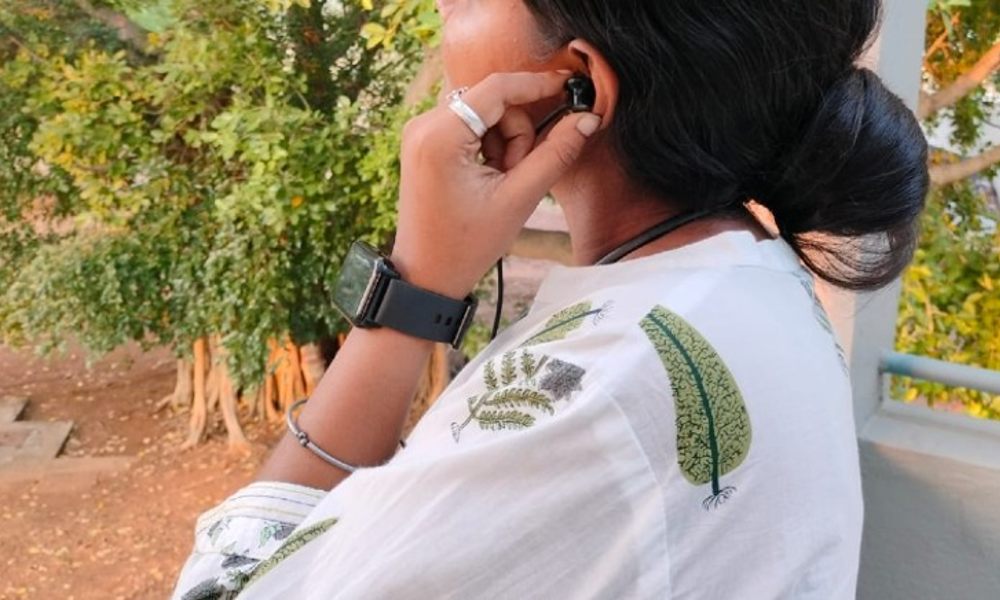The average selling price of wearable devices dropped over 15 percent in 2023, which escalated their demand.
Young children wear them. Adults of all ages and occupations wear them. Even older adults wear them. You can see them on fingers, wrists, necks and ears. Apart from making them look tech-savvy, users say they are convenient and easy to handle.
They are wearable devices or wearables. They are popular and the market for them is witnessing a considerable growth in India, according to a Feb. 2024 report released by the International Data Corporation (IDC).
As the name suggests, a wearable technology device is any kind of electronic device designed to be worn on the user’s body. Such devices can come in many different forms, such as jewelry, accessories, medical devices, and clothing. The most common types of wearable devices in India, as per the IDC report are smart watches, wrist bands and ear wears.
The market for wearables witnessed a 34 percent year-on-year (YOY) growth in 2023 (2022-23). The industry recorded a sale of 134.2 million units in 2023 with smartwatch shipments alone surging by 74 percent YOY to 53.2 million units, the report adds. IDC is a market intelligence, data, and events provider company for Information Technology, (IT) telecommunications and consumer technology sectors.
Adwitiya who has been a user of smartwatch for almost seven years, said she wears her smartwatch almost every day and everywhere. “It gives me quick access to notifications, calls, messages, and other updates without needing to pull out my phone every time,” she said. She added that she bought a newer model of smartwatch last year with newer features such as blood pressure monitoring.
Suresh Bisht said his father suffers from insomnia and he bought a sleep monitor band for his father on the advice of a doctor. “The wrist band tracks his sleeping pattern, and records periods of disruption and deep sleep. This information has helped doctors tweak his treatment, and my father sleeps better than before now,” he said.
Madhav Hebbar, store manager at a Reliance Digital store in Bangalore said the demand for smart watches has seen a big surge over the past two years. “We have at least three customers everyday intending to buy a smartwatch. Earlier they were especially popular among teenagers and young adults, but now people from all ages buy them,” he said. He added that smart watches are also a much favoured gift item.
An employee at Croma, Indiranagar said after smart watches, bluetooth earphones are the most sold among wearable devices, the sale of which had gone up by approximately 50 percent to 60 percent over the last year and this. The Indian truly wireless stereo (TWS) earbuds segment reported 85 percent growth in 2022, and Indian companies accounted for 80 percent of devices sold in the country, according to reports.
According to the IDC report, Boat, Noise and Fire-Bolt have emerged as the top three players in the wearbles industry, securing a considerable size in the overall wearable market through “diversified product portfolios and constant innovations,” but at lower Average Selling Prices (ASPs).
“The brand is well-positioned to introduce advanced features such as SIM based calling and Wi-Fi connectivity in its products, in a bid to “disrupt, innovate and surpass user expectations, thereby setting a distinct industry standard,” Amit khatri, co-founder of Noise said, as recent news reports note.
The IDC report states that during the fourth quarter of 2023, the ASP of wearables declined by 15.4 percent from $25 (Rs. 2,084 approx.) to $21.2 (Rs. 1,767 approx.). Further, the ASP of smartwatches specifically dropped 38.7 percent from $42.5 (Rs. 3,542 approx) to $26.1 (Rs. 2,175 approx.)
Anand Priya Singh, market analyst, wearable devices, IDC India noted in the report, “Affordability, low product penetration and a plethora of options led to a surge in demand for smartwatches.”
Pritish Kumar, tech business analyst at a private firm in Chennai said wearable devices are the best example of utility plus fashion. “This is favourably driving the growth of wearable technology in India, as it is abroad. Smartwatches and fitness bands have utility value in terms of making work easier, saving time and health monitoring, but these are also understood and accepted as fashion and status symbols by users,” he said.
What is notable in the findings of the report is that India’s wearables market is being led by India-based companies and not foreign brands. This shows that Indian brands have not only evolved in terms of technology but also durability, something which most Indian consumers look for in products.
However, Singh, in the report said the increasing popularity of non-branded watches offering cheap alternatives of popular models affects the sales of genuine wearables. He added that such alternatives take away from first-time user experience; and hence incumbent brands must find new and attractive ways to invite first time users.




